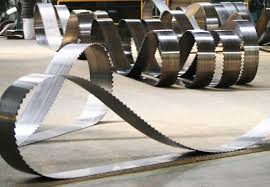Business
The Truth About Converting a 401k To A Gold IRA
If you’ve been on social media or browsing the internet any time in the past couple of months, there’s a good chance you’ve seen at least one advertisement or two all about precious metals and gold investing. Some of them come with seemingly fantastical claims about how amazing it can be if you decide to convert your 401(k) account into an individual retirement arrangement specializing in gold.
It’s certainly enough to spark curiosity, that’s for sure. Still, it raises the question – is it actually worth it to do something like this? That’s a question that is a bit more difficult to answer.
Today, that’s what we’ll be looking at exploring. If you’re curious about how this process works and whether or not it’s worth the cost, you’re in the right place!
401(k)s vs. IRAs: What’s the Difference?
As you can probably imagine, there are quite a few differences between these types of accounts. However, the main one is that employers are the ones that open a 401(k) for their employees, while individuals open IRAs on their own. If you didn’t know, “IRA” stands for individual retirement arrangement.
Beyond that, though, there are a few other distinctions that you’ll want to know. Both of them come with certain tax benefits of course since that’s the main draw of opening “official” retirement accounts rather than using a traditional savings account. However, the specifics are where things vary.
The draw of a 401(k) is that your employer will match a certain percentage of your contributions, and they have a higher annual contribution level than IRAs. However, because of the restrictions that come with this style of retirement account (namely that it’s offered by an employer and can make things complicated if you change jobs), they aren’t necessarily the “best” choice.
With IRAs, though, the appeal is that you will get some sort of tax benefit. The traditional ones will allow you to not pay taxes when you first deposit, and instead have them charged when you withdraw. Since most people retire at a lower tax bracket than they were in while they worked, which you can read about on this page, this tends to be beneficial.
The Roth IRAs work similarly but inversely – you’ll get charged taxes immediately, and not have to pay them when you withdraw. This is for people who think that they’ll be in a higher tax bracket upon retirement than they were during their working years. If you’re not certain about which might suit you, it could be time to talk to a financial advisor.
Either way, individual retirement arrangements might have smaller yearly contribution limits, but they do offer a lot more versatility in terms of what types of assets you can put into them. That’s why some people have started to convert their 401(k) into self-directed IRAs of various specialties.
Self-Directed Gold/Precious Metals IRAs
Naturally, there are several different types of self-directed IRAs. Today, though, we’ll be focusing on the ones that are dedicated to precious metals. So, if you’re looking for a way to understand how converting my 401k to a gold IRA works, you’ve certainly come to the right place. Thankfully, it’s not too complicated.
Most of the time, when you find a gold broker or seller that you want to work with, they’ll be happy to walk you through the process. However, the main thing is that you will be taking the money from your 401(k) account and instead putting it towards purchasing gold bullion or other similar assets to deposit into the IRA account.
Bear in mind, though, that not all assets classified as “collectibles” can be placed into the individual retirement arrangement. This is where it can get a bit confusing, since even bullion is technically considered to be a collectible in terms of how it’s taxed. However, most jewelry and a lot of coins that do not have the required percentage of raw gold aren’t eligible.
If that’s confusing for you, don’t worry – a lot of people find it somewhat hard to navigate that particular minefield. You can find some insights about how it works here, https://jwm.pm-research.com/content/12/2/48.short, but thankfully, most brokers are also willing to help advise you on what is eligible for an IRA versus what isn’t.
Is it Worth the Costs?
Anyone familiar with investing and retirement funds is probably already aware that when you open a new account of any sort, there’s generally some sort of fee involved. This remains the case for self-directed IRAs. Luckily, it’s not overly expensive to open one, so you probably don’t need to worry too much on that front.
Rather, a lot of people are much more worried about the impacts that liquidating a 401k and converting it into a gold IRA can have on their finances. The thing is, though, if your employer continues to offer them, you can have another 401(k) down the line. So, if you are in a good spot financially, it isn’t a bad idea to at least consider something like this.
There have been all sorts of case studies about this, too, if you’d like to check some of them out. Interestingly enough, most of the time, people who have gone through this process don’t regret it. In fact, once they reach retirement age, they’ve found it nice to have a cushion to fall back on if they do ever need to liquidate.
Although it can feel difficult to focus on something like preparing for retirement, especially when you’re younger, there’s no denying that eventually it will pay off. That’s likely why most experts recommend that the sooner you start the process, the better.
One way to do that is to look at your current financial holdings in your 401(k) plan and consider if it could be converted somehow into something that would serve you better down the line. Then, you can open another 401(k) in conjunction with your employer and enjoy the benefits of both options.
Related Posts













